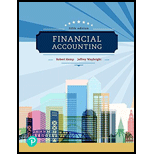
Concept explainers
Apply Your Knowledge
Ethics In Action
Case 1. Design incorporated experienced a downturn in December sales. To make matters worse, many of the recent sales were on account; because many customers were not paying on their accounts, the ending balance of
Jim became worried because he remembered the bank telling him about the importance of strong operating cash flows, so he told the accountant to redo the statement but not to reduce the net income by the accounts receivable increase or the gain on the land sale. The accountant refused because these adjustments were necessary in order to properly arrive at the net cash provided from operating activities. If these adjustments were not made, then the net change in cash could not be reconciled. Jim finally agreed out then told the accountant to just include the cash proceeds from the sale of land in the operating activities rather than in the investing activities The accountant said that would be wrong. Besides. everyone would know that proceeds from the sale of land should be an investing activity. Jim then suggested listing it as “other” in the operating section so no one would ever know that it wasn’t an operating cash flow.
Why didn’t Jim want the accountant to decrease the net income by the increase in accounts receivable and the gain on the land sale? Why do you think Jim finally agreed with the accountant? Could the operating cash flows be increased by including the cash proceeds from the sale but listing them as “other” rather than as land sale proceeds? What ethical concerns are involved? Do you have any other thoughts?
Want to see the full answer?
Check out a sample textbook solution
Chapter 11 Solutions
Financial Accounting
- As of July 1, 2022, the investee had assets with a book value of $3 million and liabilities of $74,400. At the time, Carter held equipment appraised at $364,000 more than book value; it was considered to have a seven-year remaining life with no salvage value. Carter also held a copyright with a five-year remaining life on its books that was undervalued by $972,000. Any remaining excess cost was attributable to an indefinite-lived trademark. Depreciation and amortization are computed using the straight-line method. Burrough applies the equity method for its investment in Carter. Carter's policy is to declare and pay a $1 per share cash dividend every April 1 and October 1. Carter's income, earned evenly throughout each year, was $598,000 in 2022, $639,600 in 2023, and $692,400 in 2024. In addition, Burrough sold inventory costing $91,200 to Carter for $152,000 during 2023. Carter resold $92,000 of this inventory during 2023 and the remaining $60,000 during 2024. Required: a. Determine…arrow_forwardFinancial Accountingarrow_forwardA company has an annual demand for.... please answer the financial accounting questionarrow_forward
- On July 1, 2022, Burrough Company acquired 88,000 of the outstanding shares of Carter Company for $13 per share. This acquisition gave Burrough a 25 percent ownership of Carter and allowed Burrough to significantly influence the investee's decisions. As of July 1, 2022, the investee had assets with a book value of $3 million and liabilities of $74,400. At the time, Carter held equipment appraised at $364,000 more than book value; it was considered to have a seven-year remaining life with no salvage value. Carter also held a copyright with a five-year remaining life on its books that was undervalued by $972,000. Any remaining excess cost was attributable to an indefinite-lived trademark. Depreciation and amortization are computed using the straight-line method. Burrough applies the equity method for its investment in Carter. Carter's policy is to declare and pay a $1 per share cash dividend every April 1 and October 1. Carter's income, earned evenly throughout each year, was $598,000 in…arrow_forwardCompute the materials variances on these financial accounting questionarrow_forwardSolve this general accounting questionarrow_forward
 Managerial Accounting: The Cornerstone of Busines...AccountingISBN:9781337115773Author:Maryanne M. Mowen, Don R. Hansen, Dan L. HeitgerPublisher:Cengage Learning
Managerial Accounting: The Cornerstone of Busines...AccountingISBN:9781337115773Author:Maryanne M. Mowen, Don R. Hansen, Dan L. HeitgerPublisher:Cengage Learning Cornerstones of Cost Management (Cornerstones Ser...AccountingISBN:9781305970663Author:Don R. Hansen, Maryanne M. MowenPublisher:Cengage LearningPrinciples of Accounting Volume 1AccountingISBN:9781947172685Author:OpenStaxPublisher:OpenStax College
Cornerstones of Cost Management (Cornerstones Ser...AccountingISBN:9781305970663Author:Don R. Hansen, Maryanne M. MowenPublisher:Cengage LearningPrinciples of Accounting Volume 1AccountingISBN:9781947172685Author:OpenStaxPublisher:OpenStax College Financial Accounting: The Impact on Decision Make...AccountingISBN:9781305654174Author:Gary A. Porter, Curtis L. NortonPublisher:Cengage Learning
Financial Accounting: The Impact on Decision Make...AccountingISBN:9781305654174Author:Gary A. Porter, Curtis L. NortonPublisher:Cengage Learning



